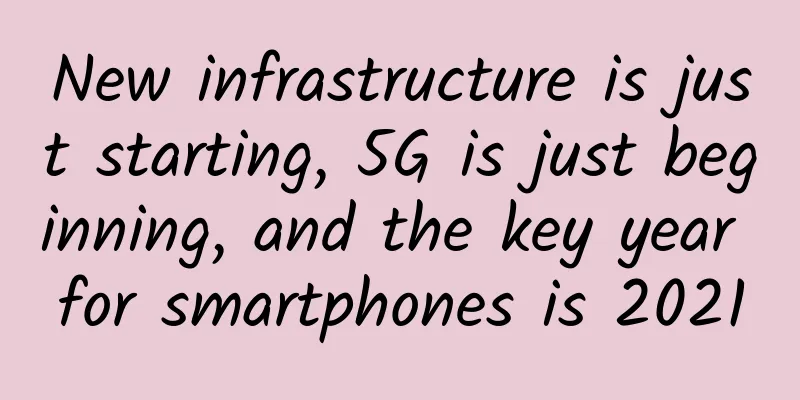Bluetooth: "You have joined the group chat"

|
Have you ever wondered how mobile phones, headphones, keyboards and other devices can be connected wirelessly? All of this is inseparable from an important technology - Bluetooth. This article will take you to explore the development of Bluetooth technology, learn how this technology has developed from the first generation to version 5.0, and its application in our daily life. 1. The origin of BluetoothIn the 1990s, there were incompatibility issues between mobile electronic devices. Users needed different interfaces and cables to connect devices, which caused great inconvenience. In 1994, Ericsson began to develop a short-range wireless communication technology, which was the prototype of Bluetooth. In 1998, Ericsson and several other companies established the Bluetooth Special Interest Group (SIG), which officially launched the standardization process of Bluetooth technology. The origin of the name Bluetooth is quite interesting. It is related to an ancient Nordic king Harald Blåtand. Bluetooth technology hopes to make different industries work together well, which coincides with the idea of the Nordic king Harald to unify the conflicting Nordic tribes. The king loved a kind of fruit, and eating this fruit would dye his teeth blue, so people affectionately called him Harald Bluetooth. Since 1999, this wireless connectivity technology has been named "Bluetooth" and is still in use today. The Bluetooth logo comes from the combination of the initials "HB" of King Harald Blåtand, which is a combination of the ancient Norse characters ᚼ and ᛒ . picture As for whether the Bluetooth King's teeth really turned blue-black because he loved eating blueberries too much, I'll leave it to those who are interested to verify it themselves~~ 2. History of Bluetooth DevelopmentThe development history of Bluetooth technology is an epic full of innovation and change. Let's review this journey together. picture Bluetooth 1.0: A new chapter in wireless connectivitypicture Bluetooth 2.0: Improvements in speed and efficiencyIn 2004, Bluetooth version 2.0 was released, introducing Enhanced Data Rate (EDR) technology, which increased the transmission speed to 3 Mbps and reduced power consumption. This version of Bluetooth began to be widely used in devices such as computers, printers, and game controllers. Bluetooth 3.0: The era of high-speed transmissionIn 2009, Bluetooth 3.0 was released, which introduced High Definition Audio technology, significantly improving the sound quality. At the same time, Bluetooth 3.0 also supports Wi-Fi direct connection, making data transmission more convenient. The new High-Speed function increases the data transmission speed to 24 Mbps by using Wi-Fi technology in conjunction. Bluetooth 4.0: Combination of low power consumption and IoTIn 2010, Bluetooth 4.0 was released, introducing Bluetooth Low Energy (BLE) technology, with a transmission speed of 1 Mbps in low-power mode. This version of Bluetooth has extremely low power consumption, which greatly reduces the energy consumption of devices and prolongs battery life, making it very suitable for IoT devices. At the same time, Bluetooth 4.0 also supports multiple devices to connect at the same time, making communication between multiple devices more convenient. Bluetooth 5.0: Longer range and higher bandwidthIn 2016, Bluetooth 5.0 was released, with a maximum transmission distance of 240 meters and a maximum transmission speed of 3 Mbps. This version of Bluetooth supports larger broadcast data packets and higher bandwidth, making communication between IoT devices more efficient. Why is the transmission speed of Bluetooth 3.0 24 Mbps, while the transmission speed of Bluetooth 5.0 is 3 Mbps? In fact, Bluetooth 3.0 has two connection modes: EDR and HS. The speed through HS can reach 24 Mbps, and the speed through EDR is 3 Mbps. The development of Bluetooth technology is not just an upgrade of technical specifications, it is also a link that connects all aspects of our lives. From the initial wireless headphones and mouse to today's smart homes and Internet of Things devices, Bluetooth technology has become an indispensable part of our lives. 3. How Bluetooth worksWe have talked about the origin and development history of Bluetooth, but what can Bluetooth do? Bluetooth is a radio technology that supports short-range communication between devices and uses the 2.4GHz ISM band for data transmission. picture Next, we will use an example to introduce the implementation process and working principle of Bluetooth communication. 🎧Bluetooth's self-introduction : "Hi everyone, I'm Bluetooth. You can also call me the 'social butterfly of the wireless world'. My mission is to enable all electronic devices to 'chat' happily without the restraint of wires." 🔎Find new friends (device discovery) : Imagine Bluetooth devices are like a big party, each device holding a megaphone and shouting: "Hey, is anyone here?" (broadcast signal). Other devices hear it and respond if they want to join the chat: "Hey, it's me, I'm here too!" (scan response). The networking mode between Bluetooth devices is master-slave mode, that is, one device is the master device, and the other devices are slave devices. The device holding the loudspeaker is the master device, and the device that responds is the slave device. 🤝Exchange of business cards (matching) : Once the two devices recognize each other, they exchange business cards (the pairing process). This is like saying, "Here are my contact information, let's keep in touch later." This process may require some secret code (pairing code) to ensure that they are not talking to a stranger. The business card is the 48-bit address of the Bluetooth device. This device is unique, which ensures that when there are multiple Bluetooth devices at the same time, they will not interfere with each other. 🚀Start chatting (data transfer) : After pairing is successful, it is like opening a conversation box, and the devices can start chatting (data transmission). How is the form of the chat determined? Is it audio or image? Each Bluetooth device has a personal profile (profile) to ensure language intercommunication. How to ensure the confidentiality, efficiency and quality of chats in chat rooms? 🔒Confidential chat (security) : In this chat room, Bluetooth also ensures that only invited friends (authorized devices) can join. If someone tries to eavesdrop, Bluetooth will activate the 'confidential mode' (encryption technology) to ensure that the chat content will not be known to outsiders. 🏃 Energy-saving running (low power consumption): Bluetooth is also an energy-saving expert, it knows how to maintain its energy (low power mode) during long chats. In this way, even if the device chats for a long time, it will not feel tired (battery drained). 🎉 Avoid clutter (avoid distractions): You may wonder, will it be a mess if so many devices chat at the same time? Don't worry, Bluetooth is very smart. It will arrange different 'chat groups' (channels) so that each group of devices has its own private space, so there will be no 'chaos' and avoid being heard by others (avoid interference). Bluetooth's frequency-hopping spread spectrum technology quickly hops among 79 different channels (with a frequency range of 2.402 GHz to 2.480 GHz), 1,600 times per second, effectively avoiding interference from other wireless devices (such as Wi-Fi, microwave ovens, etc.) and ensuring the stability of the connection. In short, Bluetooth technology is like the party planner of the technology world, allowing all devices to connect, communicate and work together freely without the entanglement of wires. Next time you connect devices with Bluetooth, imagine that they are attending a high-tech social party! 4. Bluetooth ClassificationIn order to keep up with the development of the times, the Bluetooth SIG launched a low-power Bluetooth that is more suitable for the Internet of Things. The original Bluetooth is called Classic Bluetooth. Although they are both called Bluetooth, they are completely different branches in terms of technology. They each have different characteristics and application scenarios. Below we introduce their differences through a table. picture
Classic Bluetooth and Bluetooth Low Energy have their own advantages and disadvantages. They are designed and optimized according to different application requirements and scenarios. If you need to transmit a large amount of data quickly, Classic Bluetooth is a better choice; if you are more concerned about the battery life and cost of the device, Bluetooth Low Energy is a more suitable choice. With the development of technology, Bluetooth 5.0 and subsequent versions have improved the data transmission rate while maintaining low power consumption, making the application scope of BLE wider. ENDWith the rise of new technologies such as the Internet of Things, Bluetooth technology is also evolving to adapt to a wider range of application scenarios and higher performance requirements. We can foresee that Bluetooth technology will play an important role in many fields, including smart home device control and linkage, remote monitoring and data transmission of medical and health equipment, vehicle communication and digital key applications in intelligent transportation, collaboration and data management of IoT devices, high-quality audio transmission and broadcast audio functions of wireless audio devices, indoor positioning and navigation systems, and personal item tracking and augmented reality applications of consumer electronics and wearable devices, further improving the connectivity and user experience between devices. |
<<: What problems does each generation of HTTP protocol solve?
Recommend
Network | How to design a billion-level API gateway?
The API gateway can be seen as the entrance for t...
DediPath Storage Server Promotion: Los Angeles 8TB hard drive 1Gbps unlimited traffic dedicated server $65/month
DediPath launched a storage server promotion this...
Regarding "computing power", this article is worth reading
In today’s article, let’s talk about computing po...
SDN network architecture: three layers and three interfaces
As we all know, SDN is a network with a separate ...
OneTechCloud: 25.2 yuan/month KVM-1GB/20G SSD/5M unlimited traffic/Hong Kong CN2
OneTechCloud is a Chinese hosting company establi...
A Brief Analysis of Data Flow Technology in Data Centers
What is the most valuable thing in a data center?...
Justhost newly opened German data center, 200Mbps unlimited traffic starting from $3.4/month
Justhost opened a new German data center this mon...
OneTechCloud July promotion: VPS monthly payment 10% off/quarterly payment 20% off, Hong Kong CN2/CMI large bandwidth/US CN2 GIA/high defense optional
OneTechCloud (Yike Cloud) has started its July pr...
Interviewer: Tell me how Nginx handles requests? Why doesn't Nginx use a multi-threaded model? What are the Nginx load balancing algorithms? What are forward and reverse proxies?
Interviewer: Can you tell me how Nginx handles re...
Digital-vm is 40% off in June, KVM VPS monthly payment starts from $2.4, 1-10Gbps bandwidth, 8 data centers in the United States/Japan/Singapore
Digital-vm has released a 40% discount code that ...
Juniper Networks AE Natarajan: Building a collaborative, connected, and secure networked world
[51CTO.com original article] The early winter of ...
10 common mistakes in integrated wiring, see how many you have made
Integrated wiring is a modular and highly flexibl...
Understand 3GPP 5G versions and the features of each version
While for years cellular technology has been prim...
TCP waves four times: Why four times? The principle is revealed!
introduction Hello, everyone. I am your technical...
ZJI's new Hong Kong VDS superset series 20% off 450 yuan/month, Platinum 8352Y/16G memory/240G SSD/10M CN2+BGP
This month, ZJI launched a new series of Hong Kon...









